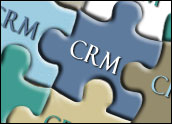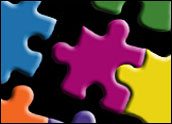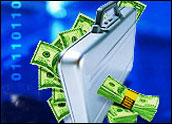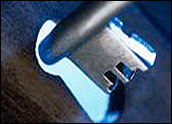
Casinos have been on a roll when it comes to customer relationships. The house has learned it always wins when it places its bets on the fact that humans are creatures of habit. Unlike other industries, however, the gambling lot does not leave the odds to a stack of faceless data mirroring only transactional data. In the eyes of the likes of Harrah’s and its competitors, knowing the sinner is far more profitable than simply making a record of his sins.
“Unique among casino loyalty programs is that they are multifaceted. Casinos use behavior-tracking software technology to assess data generated by loyalty program members,” Richard K. Miller, market analyst at Richard K. Miller & Associates, told CRM Buyer. “Going beyond simply obtaining information about their patrons’ gaming preferences, casinos use the programs to be better able to determine the destination, dining and gaming choices of its customers.”
Playing the Numbers
Does this hair-short-of-actually-spying pay off for casinos? “Absolutely — yes,” declares Jonathan Barsky, Ph.D., cochairman of Market Metrix, in his market report on the gambling industry.
Market Metrix conducted an analysis in 2007 to evaluate the impact of club membership and loyalty to casinos. The results indicated that brands with a high membership — where more than 50 percent of guests are club members — have the most loyal customer base.
In casinos where more than 50 percent of guests are loyalty club members, a whopping 80 percent are likely to return. In casinos where 30 to 50 percent of guests are loyalty club members, 65 percent are likely to return. And in casinos where fewer than 30 percent of guests are loyalty club members, 48 percent are likely to return.
Those numbers are nothing to sneeze at, particularly during an economic downturn. Companies worldwide are hurriedly implementing CRM or augmenting their existing CRM systems and upping the ante on customer loyalty programs in an effort to land anywhere close to the casino success model.
Other sectors also use the business intelligence generated by loyalty programs to determine how to reward customer loyalty while still maintaining a profit margin in the customer relationship. “But none seem to be as successful as the casino sector. I believe this is, in part, because customers are at leisure at the casino and the loyalty program is integrated into the entire gaming experience,” explains Miller. “In other consumer segments, customers are often in a hurry and do not care to take the time to participate to such an extent.”
It’s All in the Follow-Through
Enticing customers to join a loyalty program, tracking their every move and easing the way they do business is only part of the casino success story. A customer may leave a casino broke, but he’ll leave content and ready to return — largely because he feels he got what he paid for. Other industries tend to miss that simple, but crucial, part of the equation.
“Take airlines, for example. Booking is incredibly easy, they have great CRM on their Web sites and many of them have good rewards programs. But their delivery of service is miserable,” Tony DaGiau, principal of DaGiau Consulting, told CRM Buyer. “They don’t follow through on their CRM promise, and the customer feels cheated and disgruntled as a result.”
“To reach a Harrah level of success in customer relationships, you have to have the basics right or the frills won’t count,” he added.
Even the frills have to be true deal sweeteners or the relationship can sour, however, a point not lost on casinos.
“For many patrons, it seems the loyalty bonuses are a more exciting game than the slot machines themselves,” says Miller.
It’s No Game
Obviously, gaining and retaining customers is not a game, and every customer loyalty program cannot be presented as play, nor should it be. So how else can other sectors achieve the same ends?
“It’s about harvesting business opportunity that’s already there, your base of customers,” Chris Cottle, vice president of corporate marketing at Allegiance, told CRM Buyer. “You can’t just follow them around tracking what they did. Instead, you must engage them.”
A relationship does not exist with a customer unless there is personal engagement, Cottle says. “Companies that handle complaints in minutes or hours historically fare better than companies who have no complaints at all.” Seems it’s better to occasionally disagree — and later make up — with a friend than it is to be faceless in a happy crowd of strangers.
On Bended Knee
The days of allocating customers as disposable additions to a list of numbers in the data center have gone the way of the American dollar — down the tubes. With the perfect storm brewing on the economic front, it’s time to batten down the hatches and seal the cracks. After all the budgets are slashed, the layoffs announced, the inventory shortened, it quickly becomes obvious that the only lifeline left is the lowly customer. Time to introduce yourself, and ask him — on bended knee, if need be — to “please come again.” In other words, true and personal customer service is now officially “in” again.
“You need [attitudinal] information on your customers now. In the past, there was only the transactional history: the how, what, when and where of the deal. Now you need to know the why, because if you understand the drivers, and follow through on delivery, then you can win the deal,” says Cottle.
Which is a fancy way of saying “How can I help you?”
Customers everywhere hail the return of real customer service. “Can you hear me now” all ye cell phone carriers? Ahhh, it’s good to be the king again!






















































